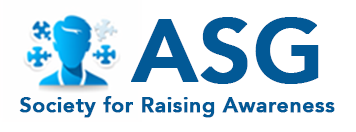Low Testosterone Treatments- Are They Worth It?
Low testosterone can gradually drain the joy from a man's life. The subtle onset of fatigue, mental fog, and plummeting libido often go unnoticed at first. But over time, the effects compound, leaving many men feeling like a shell of their former selves.
Fortunately, a wide range of treatment options exist to counteract low T. But with so many choices, it can be tricky to know where to start. This comprehensive guide examines the pros and cons of various low testosterone treatments to help men reclaim their vitality.
The Potential Perils of Low Testosterone
Testosterone is often thought of as the “male” hormone. But in reality, both men and women produce testosterone through their adrenal glands and gonads. However, the average adult male body produces about 7 to 8 times more testosterone than the typical female body.
This predominant androgen is responsible for more than just sex drive and sperm production. Optimal testosterone levels promote energy, cognitive function, lean muscle mass, bone density, and overall vitality.
When testosterone production declines, men may experience:
- Loss of libido and erectile dysfunction
- Decreased energy and endurance
- Depressed mood and reduced motivation
- Loss of muscle mass and strength
- Increased body fat and reduced bone density
- Difficulty concentrating and “brain fog”
Furthermore, research links low testosterone to higher risks of chronic conditions like type 2 diabetes, osteoporosis, cardiovascular disease, and even certain cancers.
Causes of Low T
Low testosterone arises from conditions that impair the body's production of this hormone.
Contributing factors include:
Treatment often gets recommended if total testosterone falls below 300 nanograms per deciliter (ng/dL) or free T drops under 5 ng/dL.
However, each man requires customized treatment based on his symptoms and test results.
Restoring Vitality Naturally
For men with mild declines in testosterone, adopting healthy lifestyle strategies may alleviate symptoms without prescriptions or therapies. Natural ways to boost testosterone and vitality include:
- Reaching and maintaining a healthy weight – Excess body fat promotes the conversion of testosterone into estrogen. Losing weight can increase T.
- Strength training with weights – Lifting promotes testosterone-releasing signals in the body. Multiple weekly strength sessions are ideal.
- High-intensity interval training (HIIT) – All-out exertion during intense, brief bursts of exercise stimulates T-production.
- Reducing stress – Chronic stress elevates cortisol which inhibits testosterone. Yoga, meditation, massage, and other relaxing activities lower cortisol.
- Getting adequate sleep – Lack of sleep disturbs testosterone balance. Strive for 7-9 hours nightly.
- Eliminating tobacco and limiting alcohol – Tobacco use and heavy drinking block testosterone synthesis.
- Eating testosterone-friendly foods – Shellfish, leafy greens, olive oil, tuna, eggs, beans, nuts and seeds boost T.
- Taking key supplements – Vitamin D, zinc, magnesium, and ashwagandha support testosterone production and natural test boosters.
While these natural strategies can help mitigate milder cases of low T, they prove insufficient for more severe hormone depletion. Pharmaceutical treatments provide stronger solutions in these scenarios.
Exploring Pharmaceutical Therapies
If symptoms of low testosterone persist despite lifestyle measures, a doctor may recommend pharmaceutical options including:
Testosterone Replacement Therapy (TRT)
TRT provides supplemental testosterone via gels, patches, injections or implanted pellets. This treatment aims to return testosterone to normal levels, alleviating low T symptoms. TRT carries potential side effects like acne, breast enlargement, testicular shrinkage and infertility. Stricter monitoring helps minimize risks.
Human Chorionic Gonadotropin (hCG)
Rather than providing external testosterone, hCG stimulates the testes to produce more of the hormone naturally. Injections, oral drops or pills deliver hCG. Since the body regulates its own testosterone levels with this drug, risks remain lower than traditional TRT. However, hCG therapy is slower.
Clomiphene
This oral anti-estrogen medication blocks estrogen receptors in the hypothalamus, triggering increased luteinizing hormone (LH) production. LH then stimulates greater natural testosterone synthesis in the testes. Clomiphene avoids direct testosterone administration. Acne, gynecomastia, headaches and vision changes may occur.
Anastrozole
This drug belongs to a class of medications called aromatase inhibitors. Anastrozole blocks the aromatase enzyme which converts testosterone to estrogen. Halting this conversion results in higher testosterone levels. Joint pain and stiffness are potential side effects.
Kisspeptin
A recently emerged experimental drug, kisspeptin shows promise for treating low T. Kisspeptin stimulates gonadotropin release in the brain, which boosts testicular testosterone secretion. So far, research indicates few side effects, but more data is needed.
Deciding on the Best Low T Treatment
With so many options for increasing testosterone, choosing the right approach can get confusing. Certain key factors impact determining the optimal treatment:
– Current testosterone level – Is total T mildly low (300-400 ng/dL), moderately decreased (200-300 ng/dL) or severely deficient (<200 ng/dL)?
– Symptom severity – Are symptoms significantly disrupting quality of life? Mild issues may respond to natural remedies while more severe cases likely require TRT or similar therapy.
– Age and health status – Older men or those with comorbidities often benefit more from TRT under close medical supervision. Younger, healthy men may opt for more conservative treatments like clomiphene.
– Treatment goals – Some men aim to restore total T levels to a normal range, while others only seek to alleviate bothersome symptoms. These different goals inform treatment selection.
– Preferences – Some men wish to avoid the frequent injections or pellets of TRT and prefer oral options like clomiphene. Others want the most rapid, direct resolution of symptoms.
– Insurance coverage and cost – While insurance plans are increasingly covering TRT, they less commonly pay for medications like clomiphene.
By carefully assessing these parameters with a knowledgeable physician, men can select the low testosterone treatment most aligned to their needs, preferences and health profile.
While frustrating, symptoms of low T need not permanently compromise a man's strength, vitality and enjoyment of life. Through science-backed natural lifestyle changes and pharmaceutical therapies, men can counteract declining testosterone and reclaim their energy, focus and confidence.
With vigilance and proactive treatment, the future looks bright for conquering low T.
